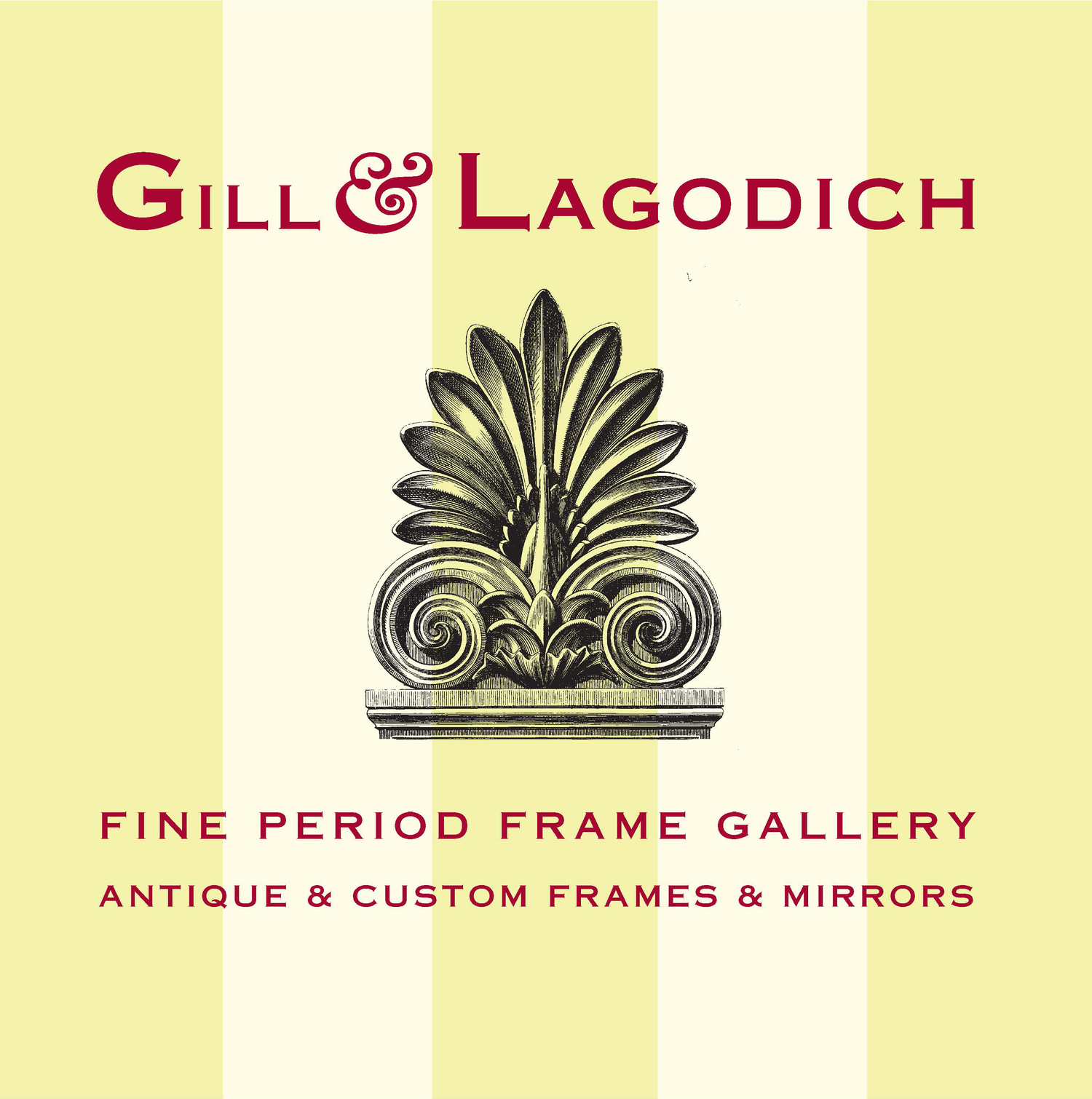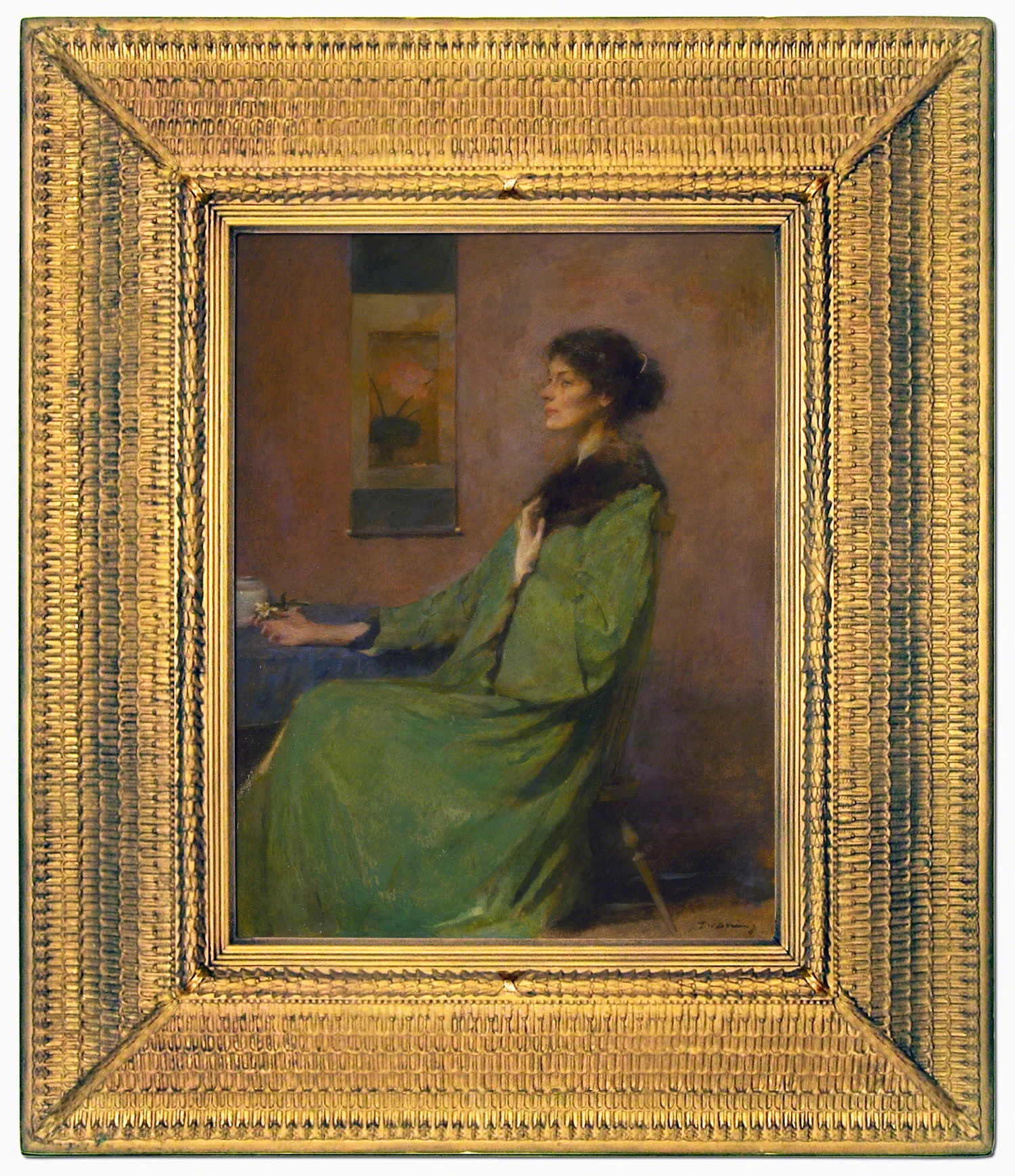TERRA FOUNDATION FOR AMERICAN ART, CHICAGO, ILLINOIS
"The Terra Foundation for American Art is dedicated to fostering exploration, understanding, and enjoyment of the visual arts of the United States for national and international audiences. Recognizing the importance of experiencing original works of art, the foundation provides opportunities for interaction and study, beginning with the presentation and growth of its own art collection in Chicago. To further cross-cultural dialogue on American art, the foundation supports and collaborates on innovative exhibitions, research, and educational programs. Implicit in such activities is the belief that art has the potential both to distinguish cultures and to unite them."
Gill & Lagodich has provided both period and replica frames for paintings from the Terra Foundation for exhibition or long-term loan to other esteemed institutions (see details of some exhibitions below). Our framing work includes: Provision of period frames for paintings by George Caleb Bingham, John Graham, Childe Hassam, Winslow Homer, Yasuo Kuniyoshi, Ernest Lawson, Willard Metcalf, Jane Peterson, Everett Shinn, Lilly Martin Spencer, and Theodore Wendel. Custom-made replica frames for paintings by Milton Avery, William Merritt Chase, Beauford Delaney, Thomas Wilmer Dewing, Maurice Prendergast (eight replicas of different original Prendergast frames), and George Tooker.
“Prendergast in Italy” Gill & Lagodich provided nine custom-made Prendergast frame replicas: eight gilded hand-carved wood, one with antique-gesso patina. G&L also restored one original Prendergast gilded wood frame from the Terra Collection in our New York studios. Exhibition schedule: Williams College Museum of Art, Williamstown, MA, July – September 2009; Peggy Guggenheim Collection, Venice, Italy, October 2009 – January 2010; The Museum of Fine Arts, Houston, February – May 2010
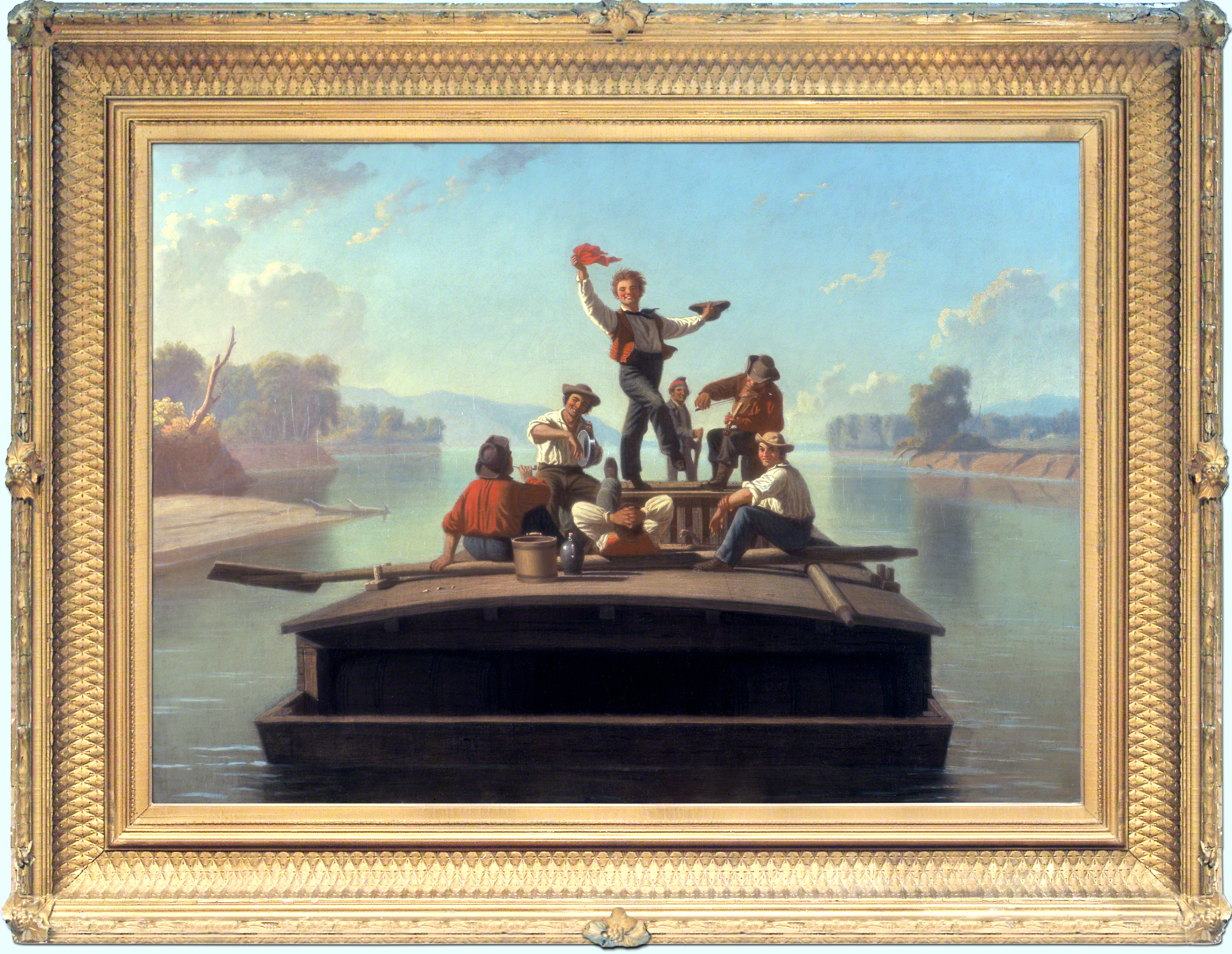
GEORGE CALEB BINGHAM (1811 – 1879)
The Jolly Flatboatmen, 1877-78, oil on canvas, 26-1/16” x 36-3/8”, period c.1860s American painting frame; gilded applied composition ornament on wood, molding width: 5-1/2”. Terra Foundation for American Art, Daniel J. Terra Collection, 1992.15
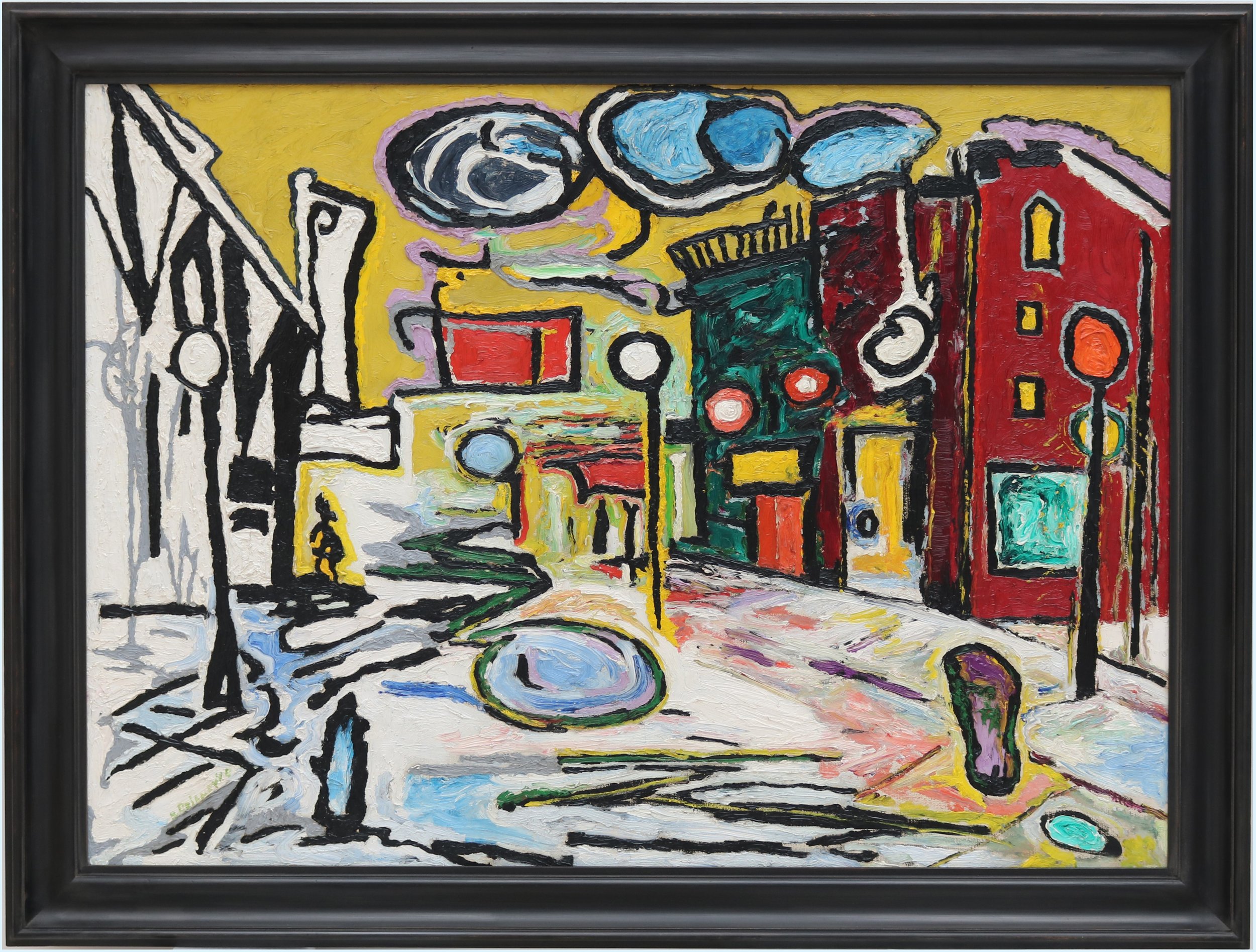
BEAUFORD DELANEY (1901–1979)
Untitled (Village Street Scene), 1948, oil on canvas. Custom-made replica c. 1900 European ebonized molding frame, molding width 2-7/8 in. “The facades, lampposts, and general activity of Greenwich Village were the focus of many works, including Untitled (Village Street Scene), that Beauford Delaney made between 1940 and 1952 while living in New York City. Delaney was captivated by the urban landscape and sought to visually interpret the energy of modern life through brilliant colors, thickly applied paint, and bold, animated lines. Untitled (Village Street Scene) represents the most successful of the artist’s numerous attempts to depict this particular intersection. Its perspective is accurate yet still evocative, while its composition is capacious in ways that allowed Delaney to assemble and reconcile the arrangement of a variety of elements and motifs, that appear frequently in other works of this period, including traffic lights, lampposts, manhole covers, and clouds. Socially, Delaney straddled two worlds. He was part of the burgeoning Harlem Renaissance movement and friendly with artists like Norman Lewis, Jacob Lawrence, Augusta Savage, and Romare Bearden. But desiring to pursue his own particular artistic vision, through his friendship with contemporary artist Stuart Davis, he also became tied to the avant-garde movements of Greenwich Village, where he associated with gallerist Alfred Stieglitz and artists in his circle, such as Georgia O’Keeffe, John Marin, and Arthur Dove. Moving easily between various groups, Delaney developed a spirited, energetic style for his figural work and cityscapes. The prominence of yellow in Untitled (Village Street Scene) contributes to the work’s liveliness, but also holds a deeper significance: while Delaney was fond of large passages of bright color, he connected most deeply with the color yellow, which held a spiritual significance for him. Untitled (Village Street Scene) is one of the earliest works in his oeuvre that contains a large amount of yellow, covering nearly three-quarters of the canvas, and linking this work to developments later in the artist’s career. Delaney struggled throughout his life with mental health issues and social anxieties pertaining to race and sexuality; for him, the color yellow represented light, healing, and redemption, and he would use it almost exclusively in the portraits and abstract paintings he made in the 1960s and 1970s, near the end of his life.” —Terra Foundation label
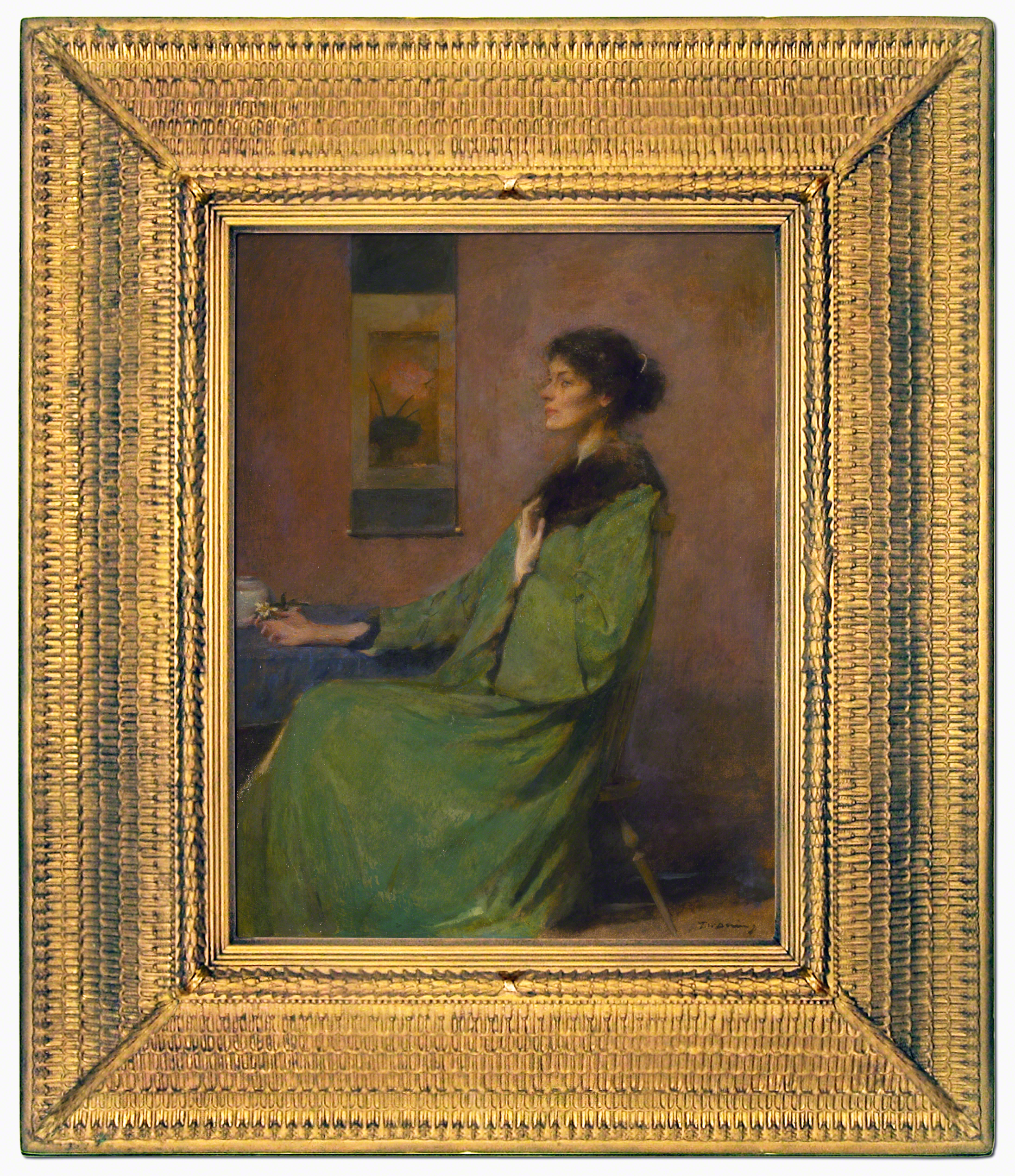
THOMAS WILMER DEWING (1851 – 1938)
Portrait Of A Lady Holding A Rose, 1912, oil on canvas, 21-1/4 x 16-1/4 inches; c. 1895-1905 American Stanford White painting frame; gilded composition ornament over wood; attached grille design, molding width: 6-5/8”, custom-made replica frame fabricated in the Gill & Lagodich studios. Frame commissioned by the Terra Foundation for American Art. Painting, Daniel J. Terra Collection, 1999.46T
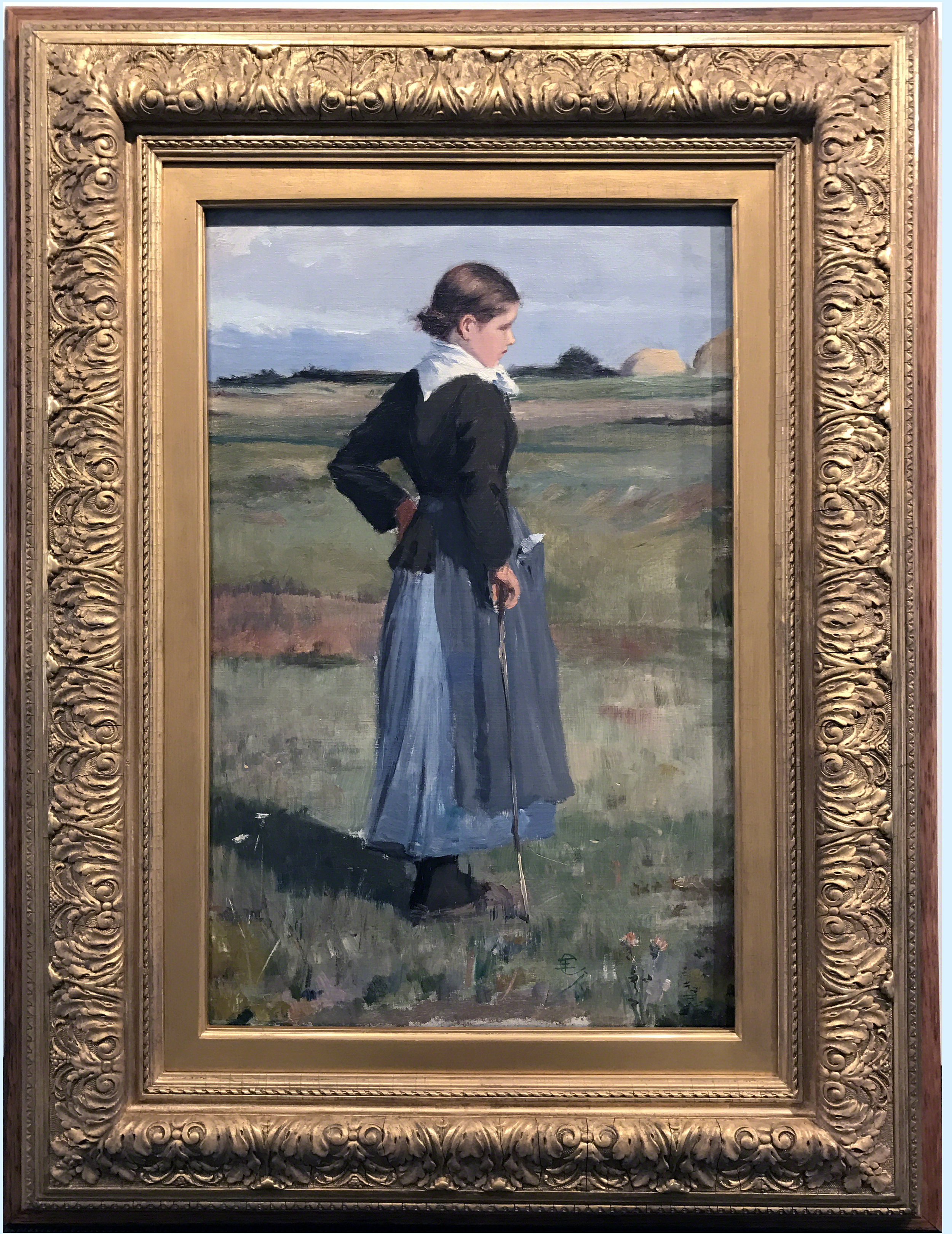
CHILDE HASSAM (1859–1935)
French Peasant Girl, c. 1883, oil on canvas, 21-5/8” x 13-7/8”, period 1870-80s American frame, gilded applied composition ornament over wood; reverse profile, acanthus patterned ogee with original wood outer edge; molding width: 5-3/8” "Said to be one of Childe Hassam’s earliest paintings in oils, French Peasant Girl shows a young woman in profile, leaning on a stick as she gazes into the distance beyond the right edge of the composition. Seen from slightly above, the figure is embedded in the land, with only her neck and head rising above the horizon line. The soft brushwork and muted palette (range of colors) of this outdoor image, as well as the peasant subject, show the influence of a group of French painters of rural life and landscape known as the Barbizon school. Hassam gained first-hand knowledge of their work during his first visit to Europe, in 1883; French Peasant Girl probably was painted soon after his return to his native Boston, where the Barbizon school’s naturalistic portrayal of humble country life was championed and emulated by painter William Morris Hunt. Hassam never returned to the theme of peasant life, but the solitary female subject and the problem of juxtaposing near objects against a distant background would continue to preoccupy him for the remainder of his long career." Terra Foundation for American Art, Daniel J. Terra Collection, 1989.21
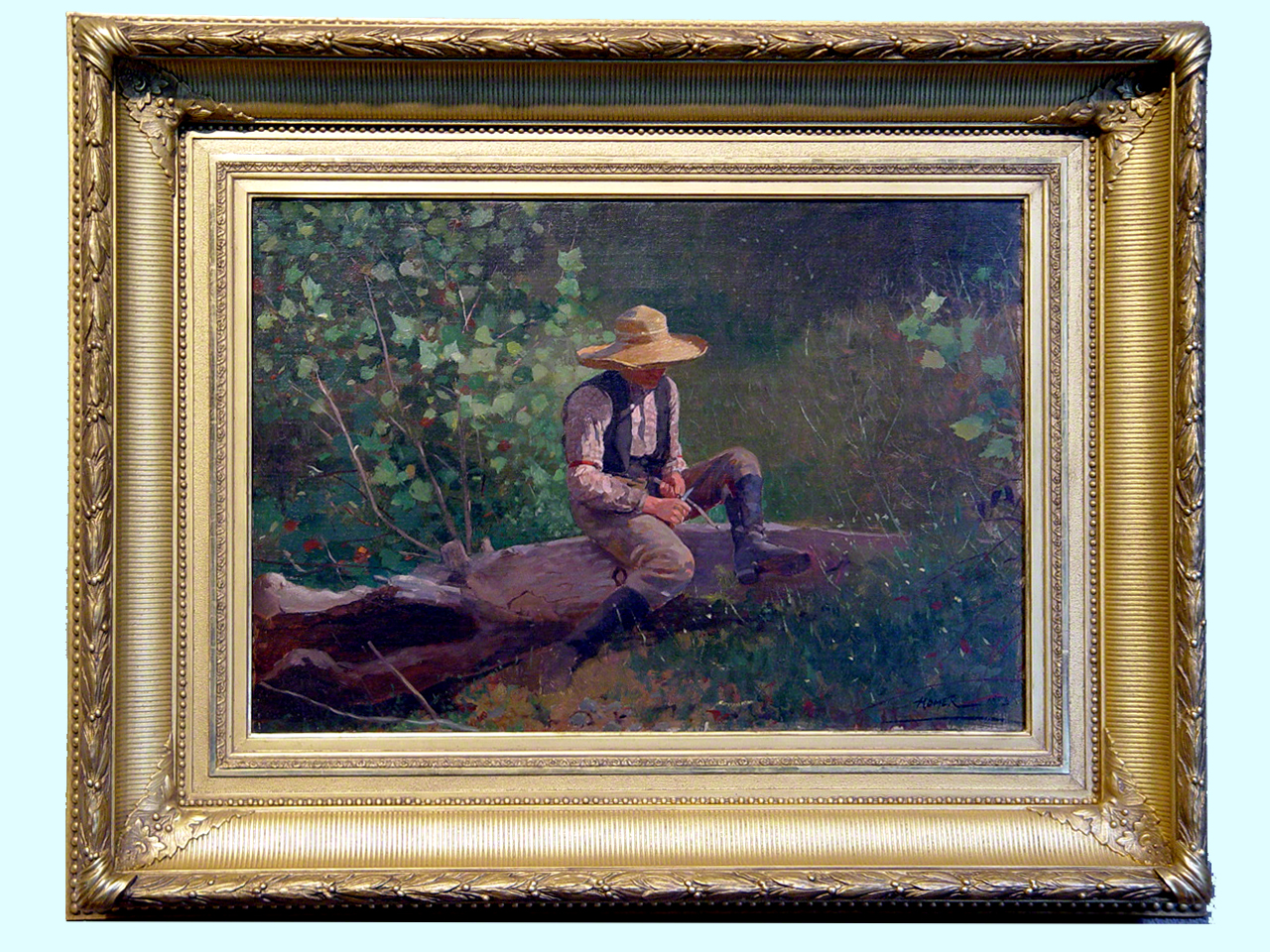
WINSLOW HOMER (1836 – 1910)
The Whittling Boy, 1873, oil on canvas, 15-3/4" x 22-11/16", period c. 1870s American painting frame, gilded applied composition ornament on wood; molding width: 5-1/4” . Terra Foundation for American Art, Daniel J. Terra Collection, 1994.12
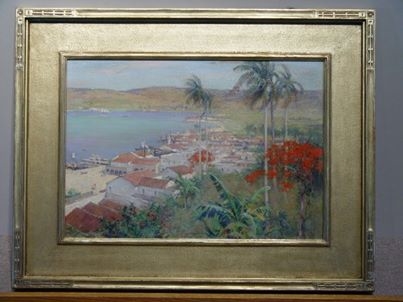
WILLARD METCALF (1858–1925)
“Havana Harbor”, 1902, oil on canvas, 18-5/16” x 26-1/8"; c. 1910 American Arts and Crafts Hassam style painting frame, lemon-gilded hand-carved wood, cassetta profile. Fabricated by Artists Framing Co., New York maker; original paper label on verso: “Tel. PLAZA 1680 / ARTISTS FRAMING CO./ J. Lowenbein, Prop. /PICTURE FRAMES / FINE PAINTINGS / 57 East 59th Street/ NEW YORK.” Molding width: 5-1/8” Painting: Daniel J. Terra Collection, Chicago, Illinois.
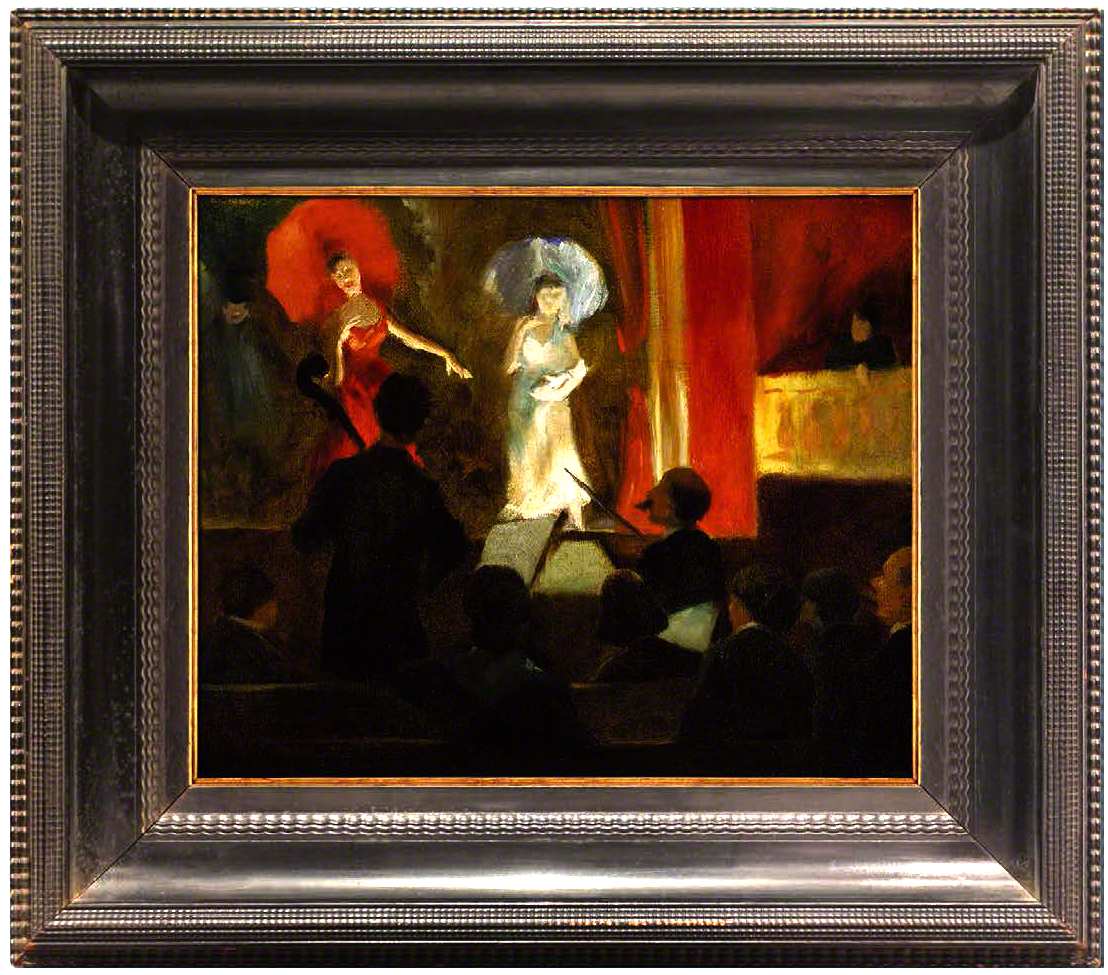
EVERETT SHINN (1876–1953)
Theater Scene, 1903, oil on canvas, 12-3/4" x 15-1/2". 19th-century American painting frame, design attr. Wm. C. LeBrocq, New York maker, gilded and applied ornament on ebonized wood; molding width: 4-1/4" Painting: Daniel J. Terra Collection, 1999.136 Terra Collection Initiative: The Eight and American Modernisms "Frustrated by the art world’s elitism and the snobbish exclusivity of the academy’s juries, eight American painters united in 1908 to upend the establish norms and stage their own exhibition of modernist art. The Eight and American Modernisms showcased the work of these artists, known as The Eight (Arthur B. Davies, William Glackens, Robert Henri, Ernest Lawson, George Luks, Maurice Prendergast, Everett Shinn, and John Sloan) and re-asserted their significance to American modernism in the early twentieth century. ... An examination of each artist’s stylistic evolution over decades revealed the under-appreciated complexities of these artists’ work and challenged the accepted wisdom about the evolution of the modernist style."
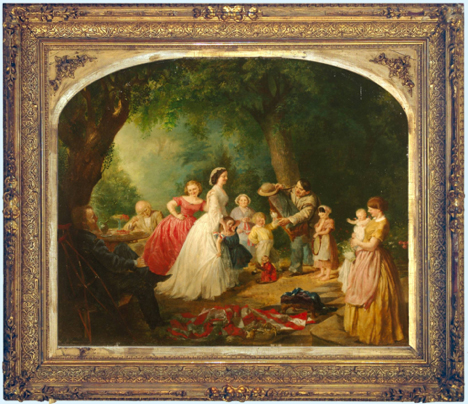
LILY MARTIN SPENCER (1822 – 1902)
The Home Of The Red, White, And Blue, c. 1867 – 1868, oil on canvas, 24-1/8 x 30-1/8 inches, c. 1850s-60s American painting frame; gilded applied composition ornament over wood. "With its acquisition of Lily Martin Spencer‘s Home of the Red, White, and Blue of about 1867, the Terra Foundation enhances its rich holdings in nineteenth-century genre painting and adds to the many works in the collection by women. The painting joins a group of works thematically related to the Civil War, including Frederic E. Church’s Our Banner in the Sky, Winslow Homer’s On Guard, and William Sydney Mount’s Fruit Piece: Apples on Tin Cups. Spencer’s scene of a family picnic combines national politics with the artist’s favorite theme, the domestic gathering. Here, generations of family members are joined by several obvious outsiders in a metaphor for the gravely fractured nation at its crucial moment of reunification, symbolized by the tattered flag under repair in the foreground. Now considered one of the leading genre painters of the antebellum period, Spencer created narrative works in which women are uniquely central. Since her rediscovery beginning in 1974, scholars and art enthusiasts have come to value Spencer’s images for the important insights they offer into middle-class domesticity, the cultural politics of gender roles, and the turbulent state of the American nation in the mid-nineteenth century. "Home of the Red, White, and Blue" is featured in the exhibition Home Front: Daily Life in the Civil War North, co-organized by the Terra Foundation and The Newberry, on view Sept. 27–Mar. 4, 2014."
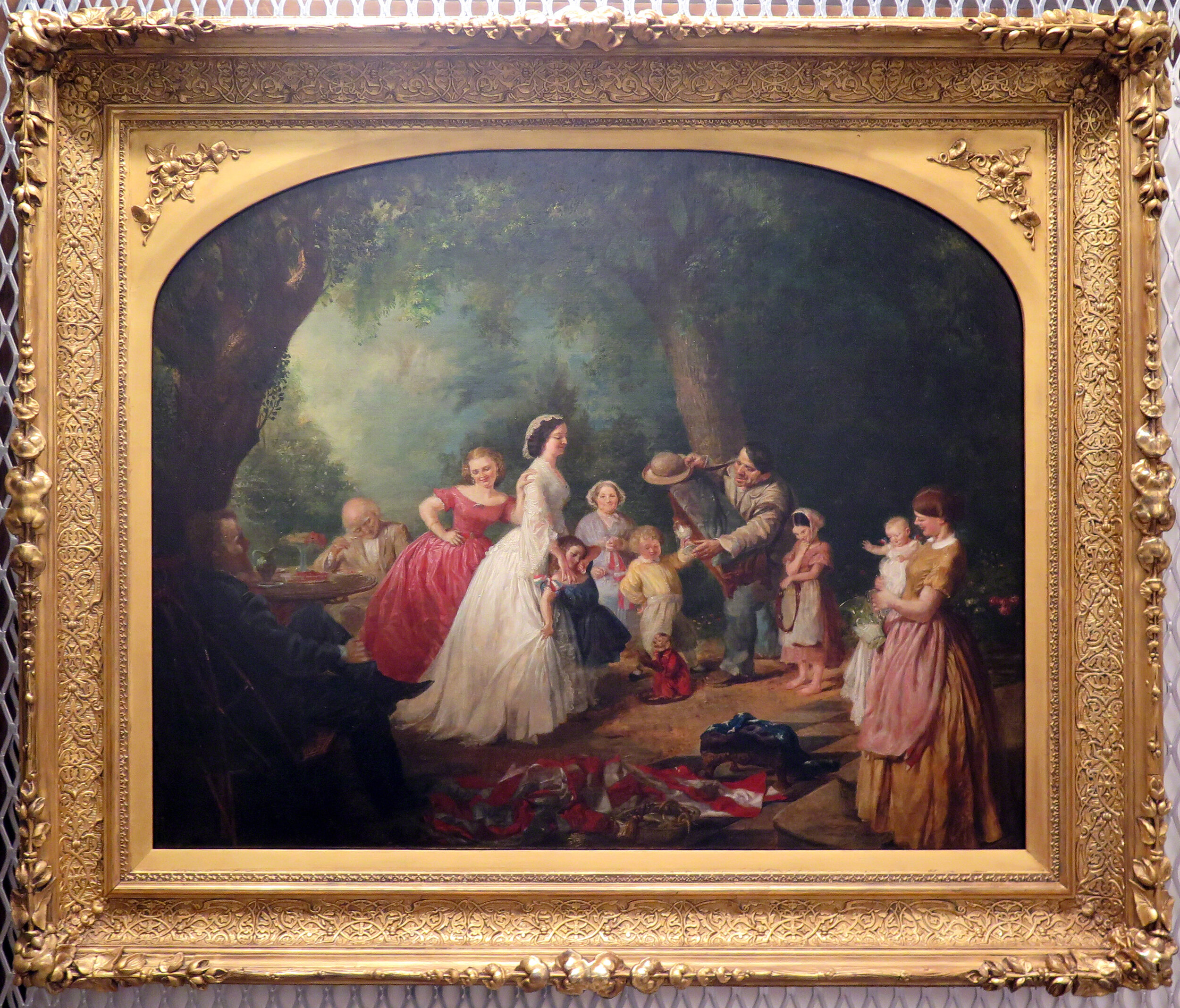
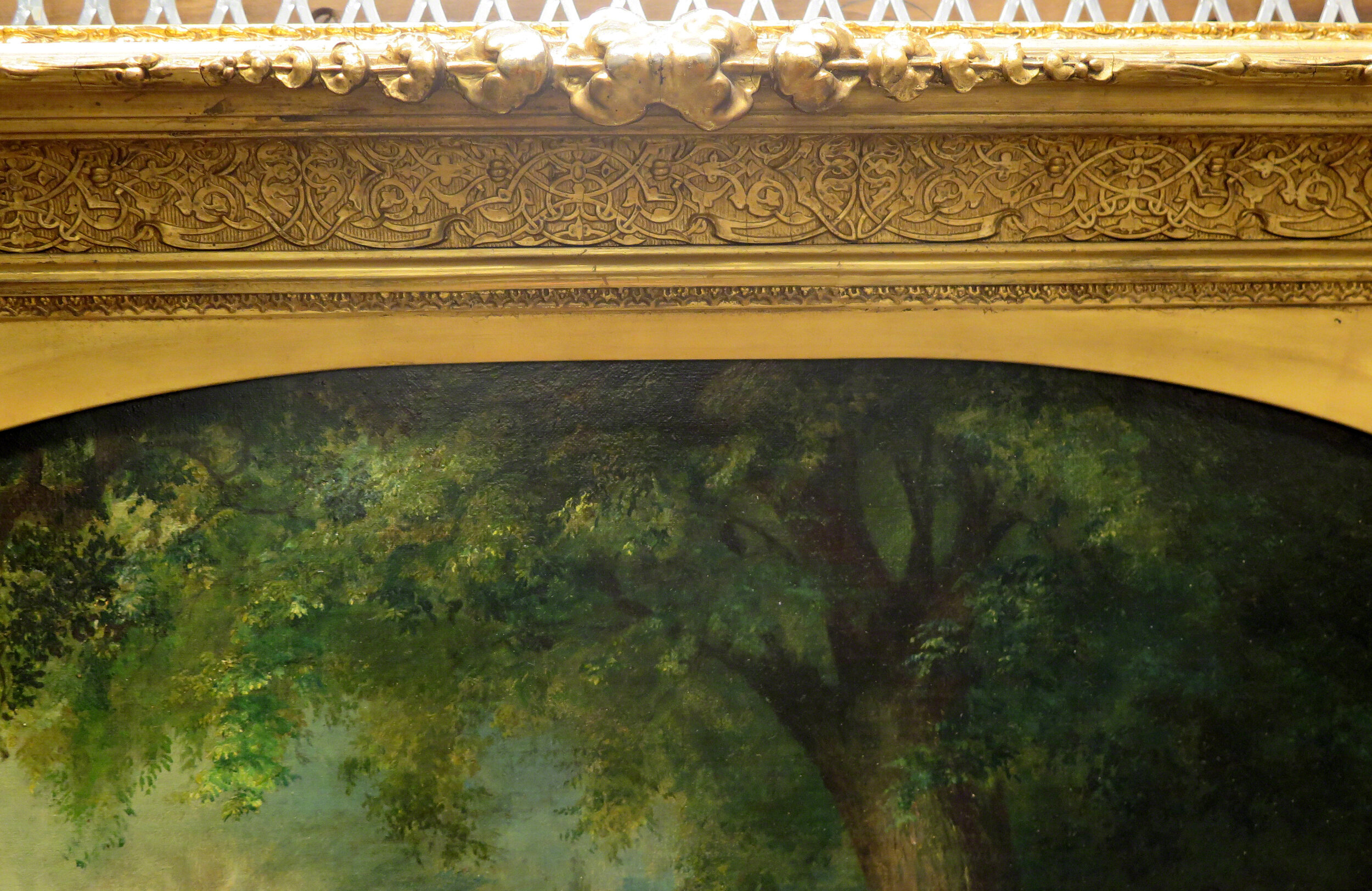
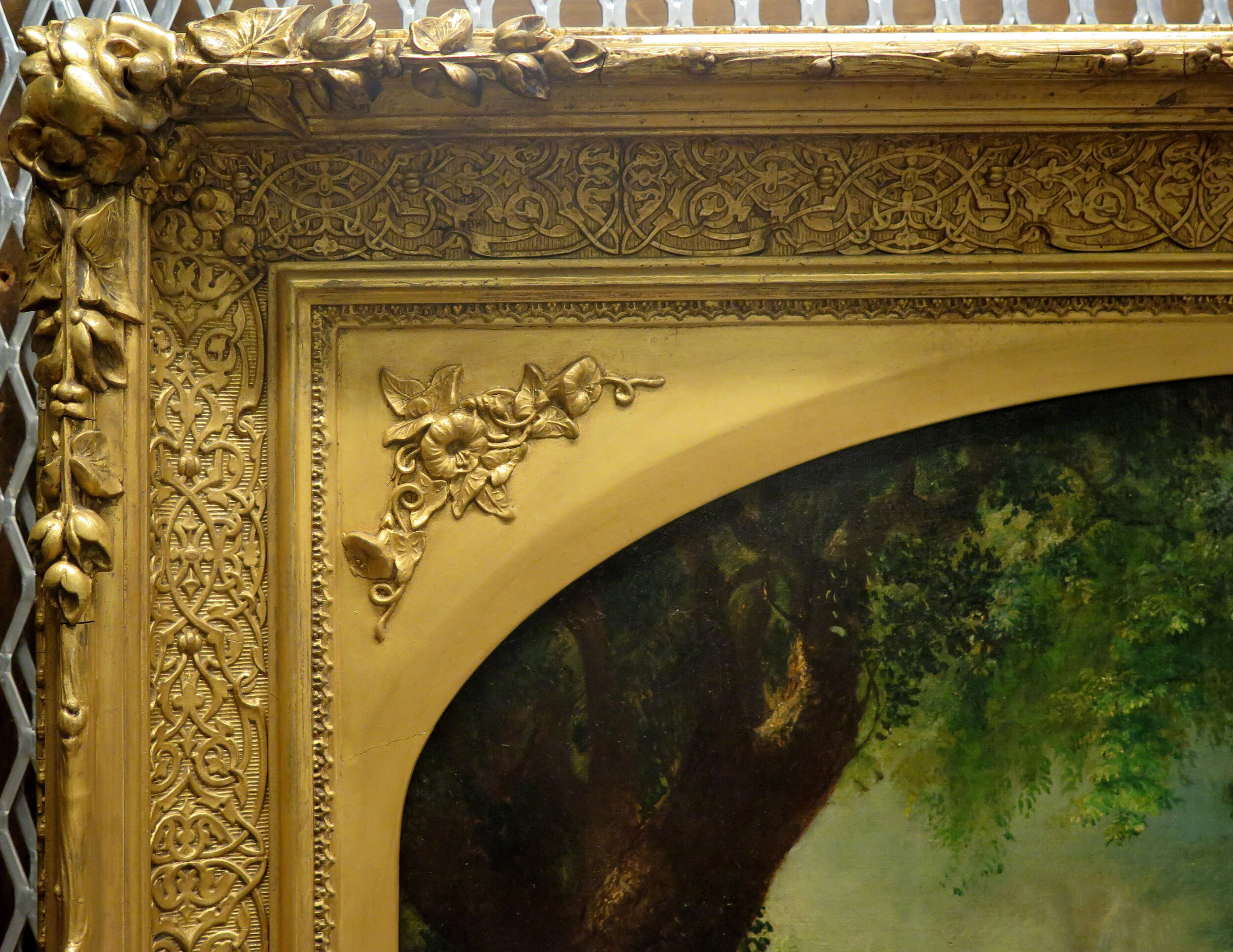
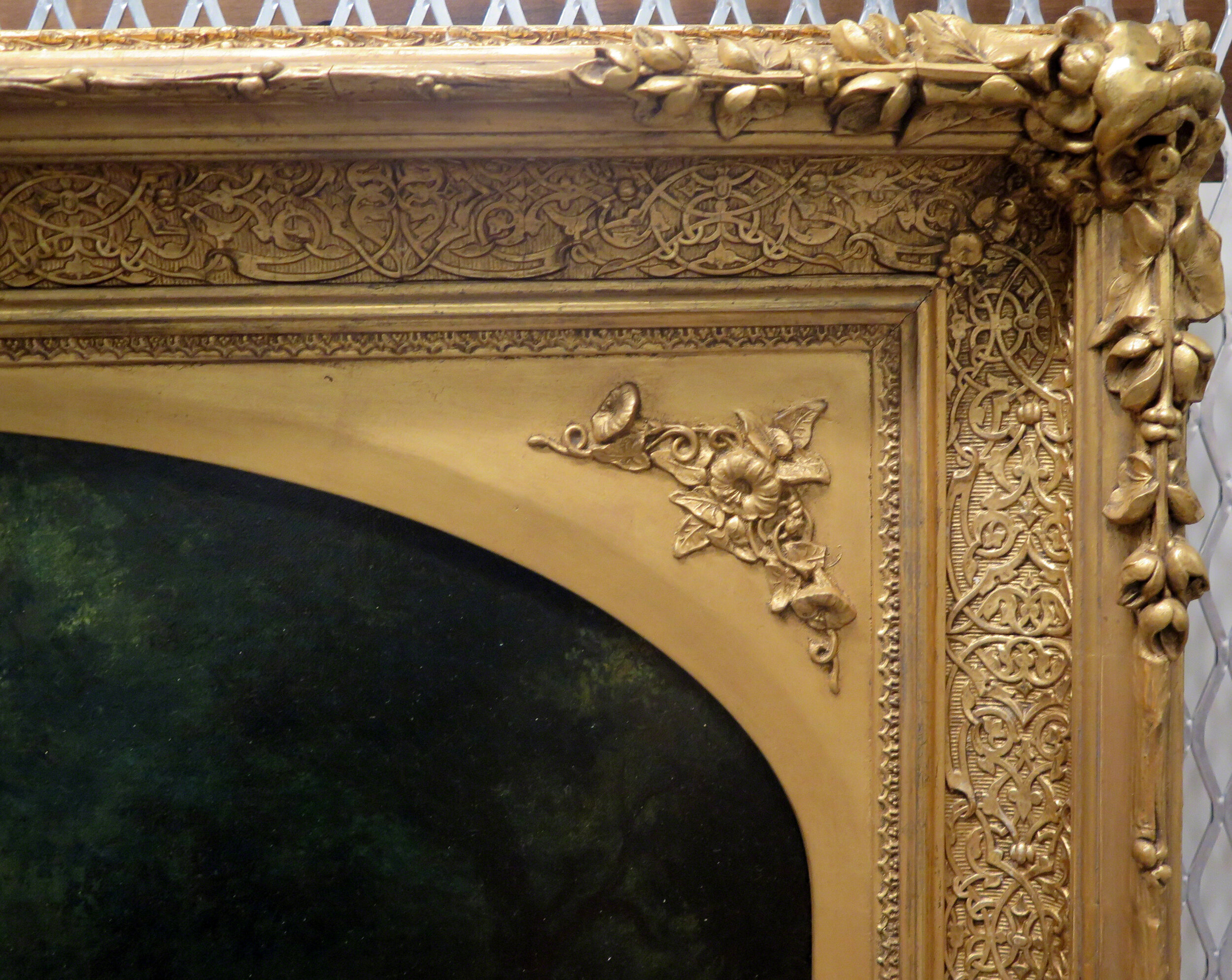
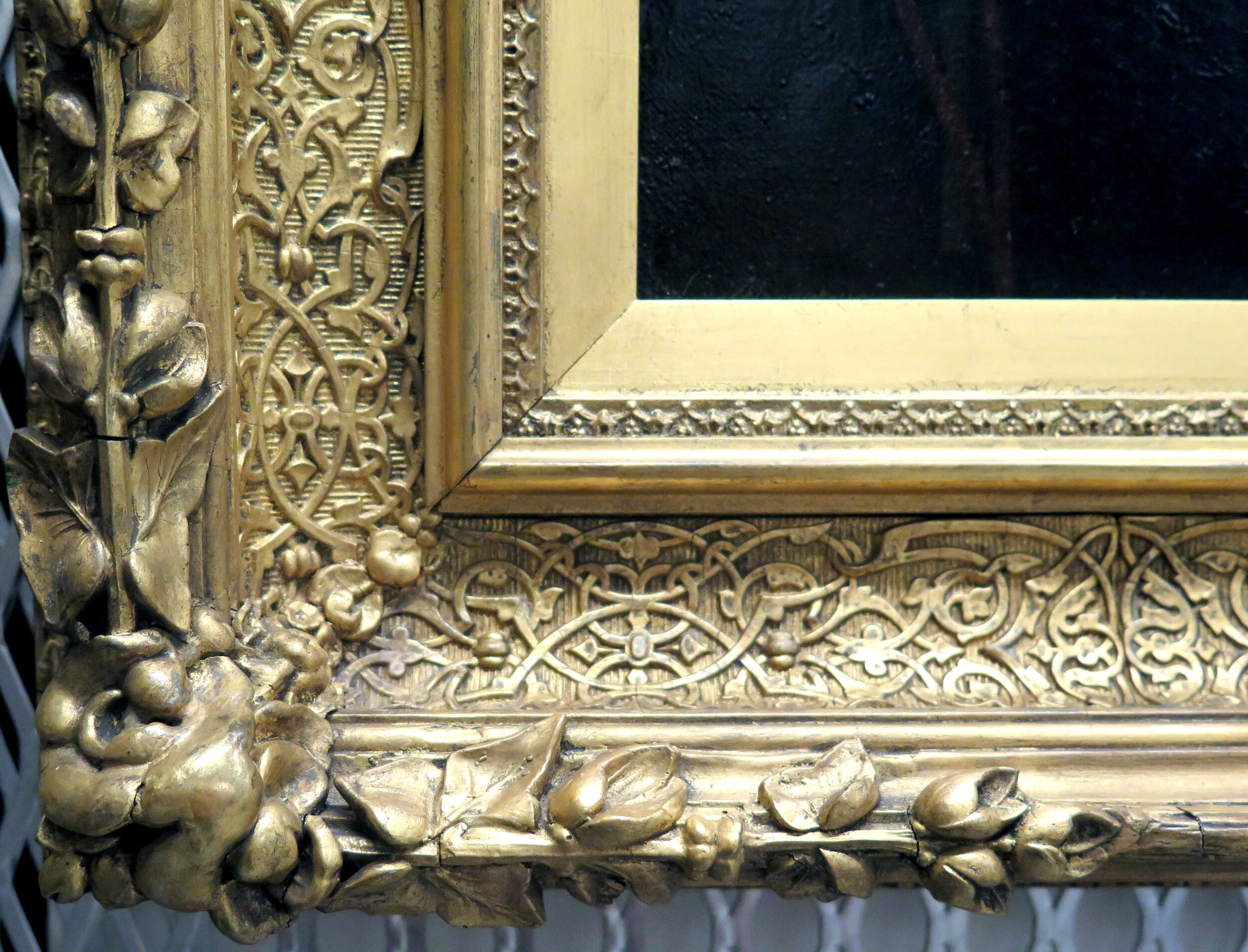
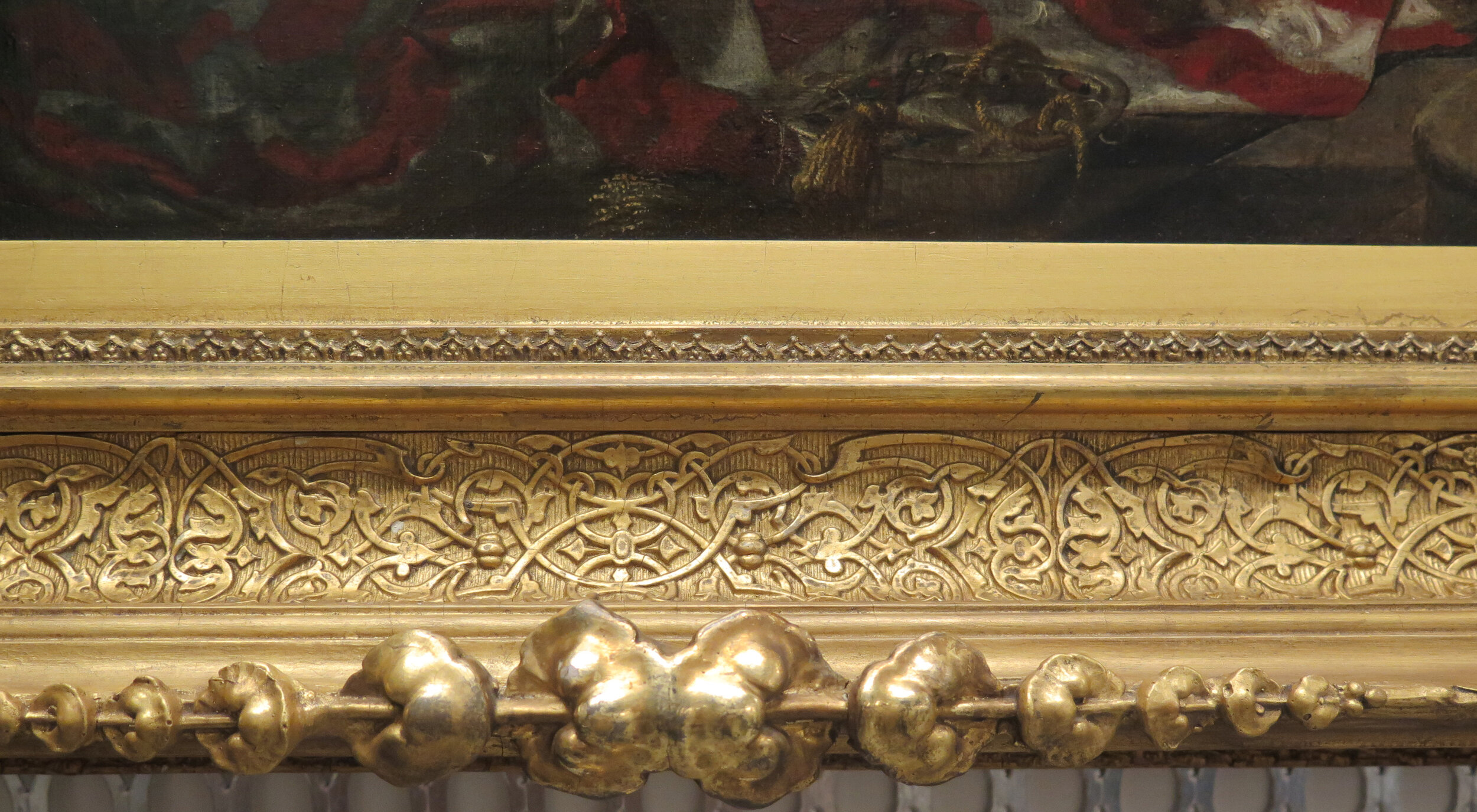
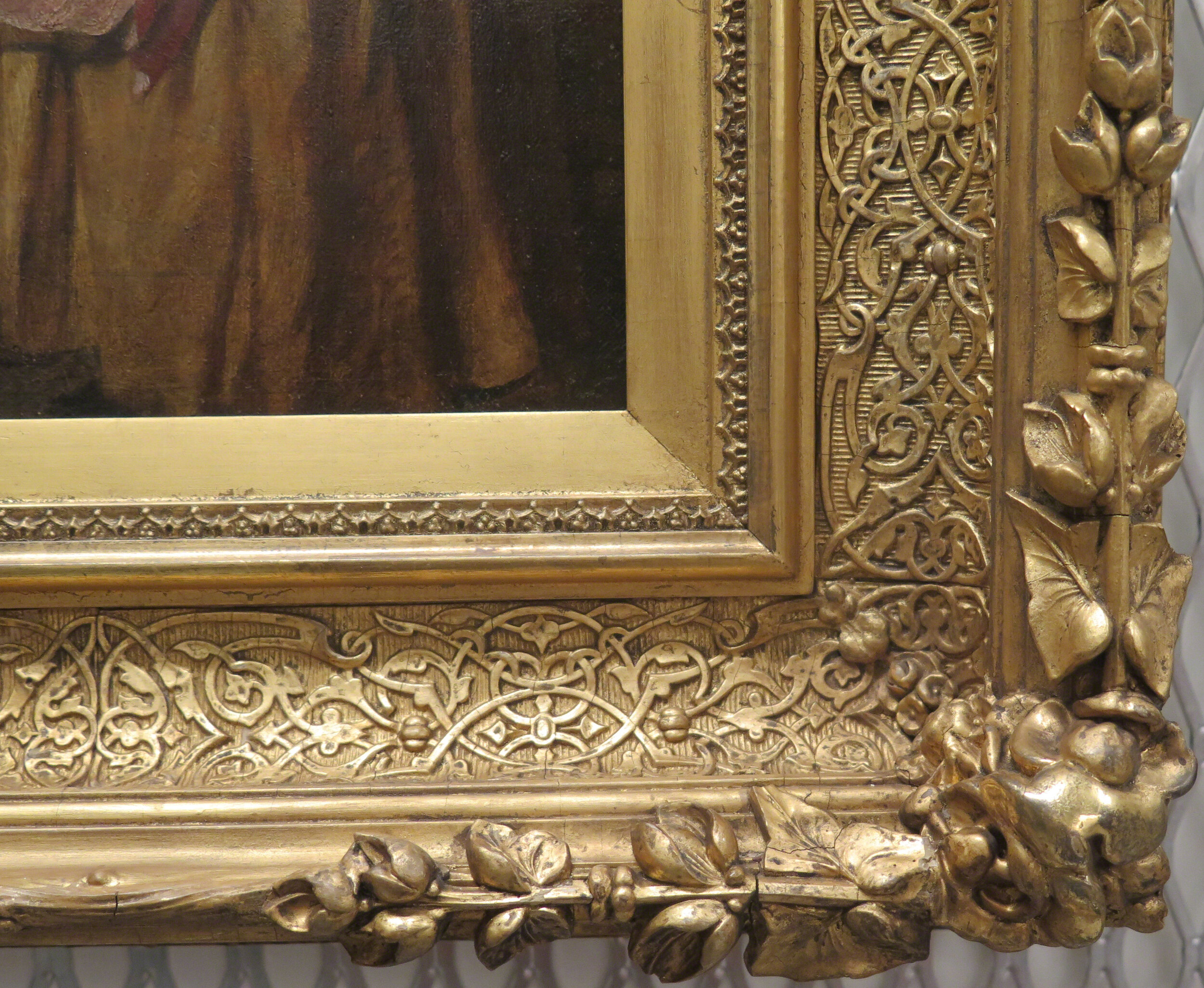
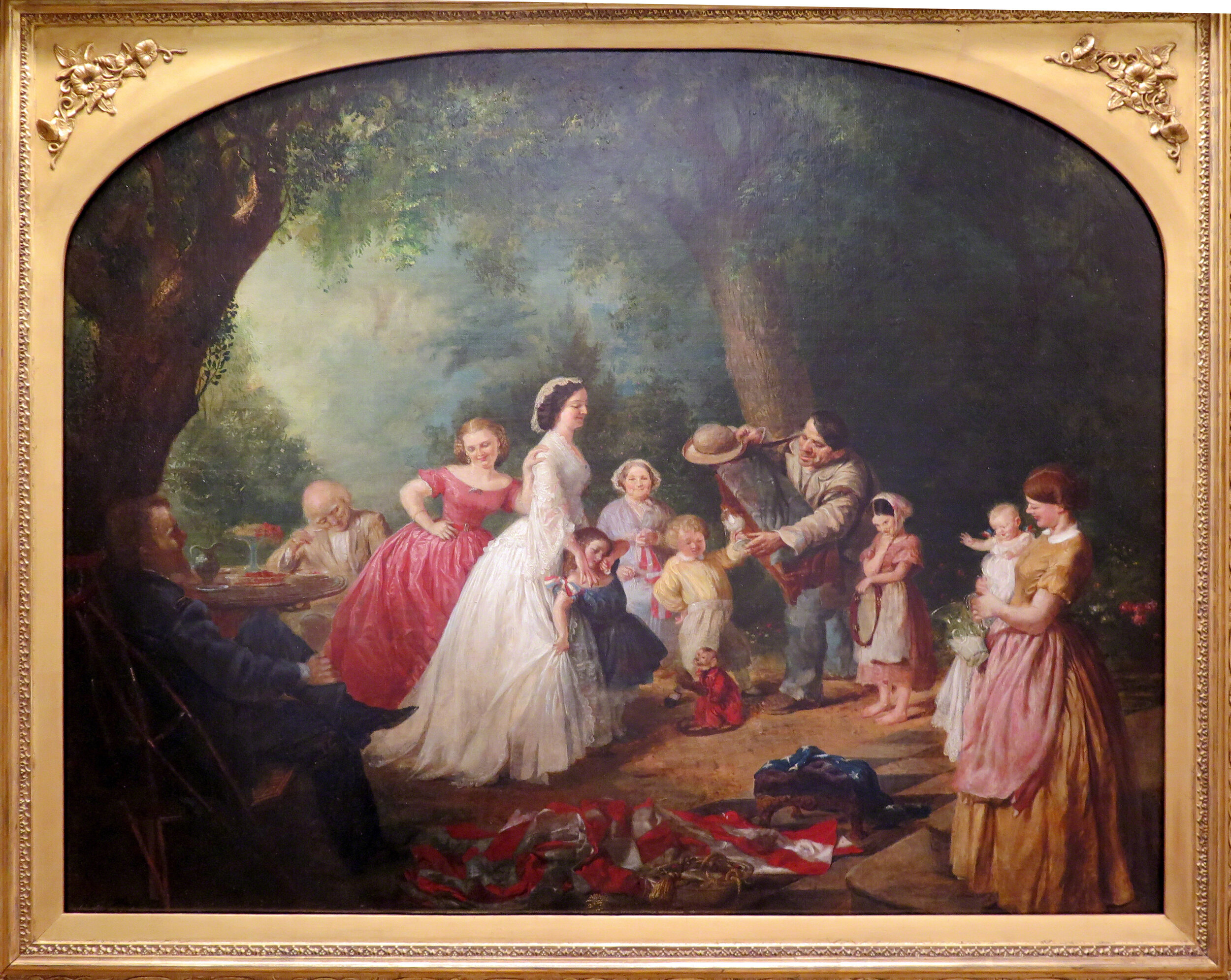
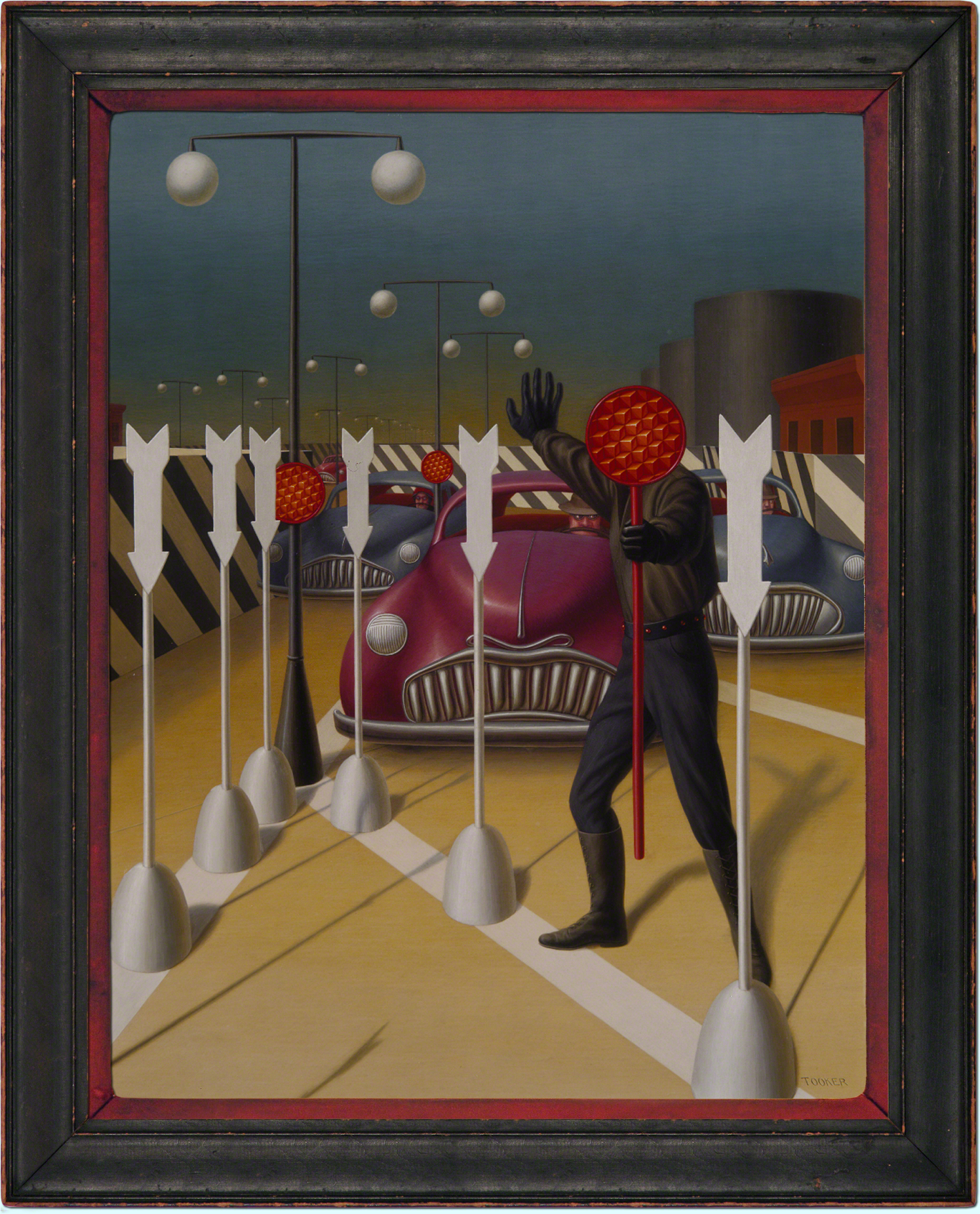
GEORGE TOOKER (1920 – 2011)
Highway, egg tempera on gesso hardboard, 1953, 22-7/8" x 17-7/8", custom-made replica frame, first-quarter 20th century American frame; black-painted wood with added 5/8”-visible red velvet liner, Molding width: 2-5/8" Terra Foundation for American Art, Daniel J. Terra Collection, 1992.134 Extended loan: Pennsylvania Academy of the Fine Arts (PAFA), Philadelphia, Pennsylvania (2011–2016) "The extended loan of the Terra Foundation’s painting ‘Highway’ by George Tooker, will enhance an installation of artists such as Gertrude Abercrombie, George Ault, Kurt Seligman, Honoré Sharrer, Yves Tanguy, Dorothea Tanning, John Wilde, and Andrew Wyeth at PAFA. The opportunity to develop additional programming as the result of the Tooker loan allows PAFA to pursue a symposium on a group of artists, including Peter Blume, George Tooker, Ivan Albright, and other Americans who used a realist method to invent their own worlds by transforming the symbolic language of Old Master painting into a contemporary idiom. These artists’ works gravitated towards the uncanny and were often called “magic realists.”"
